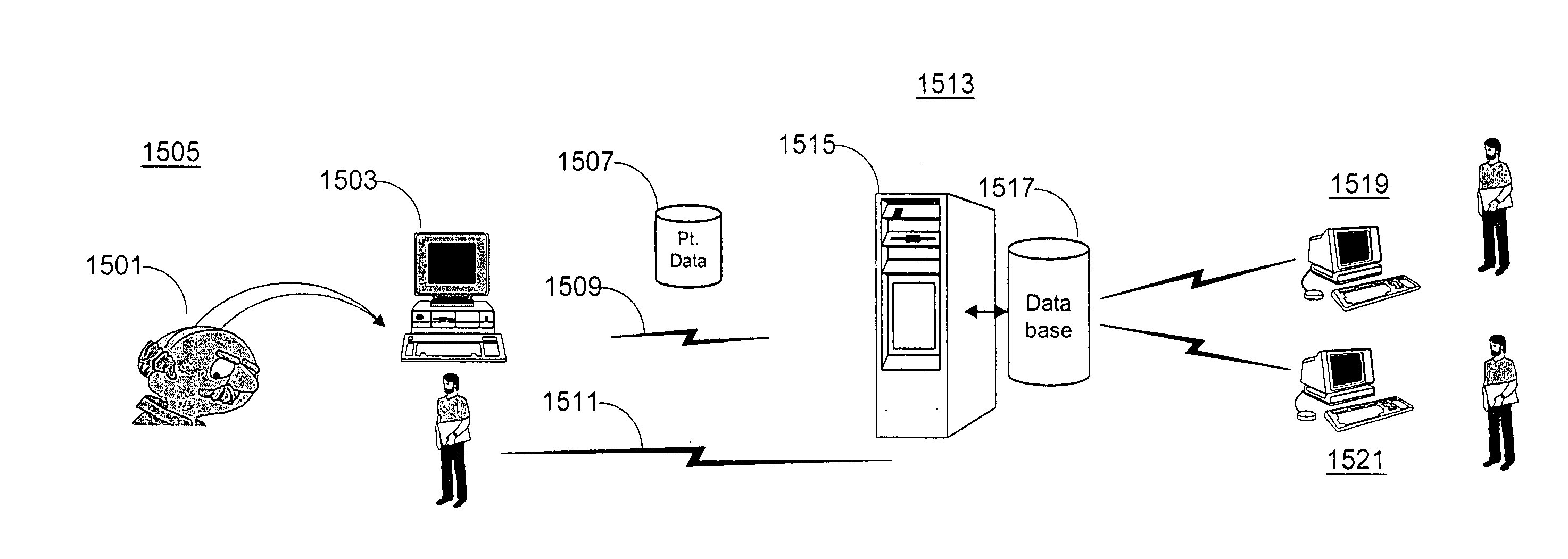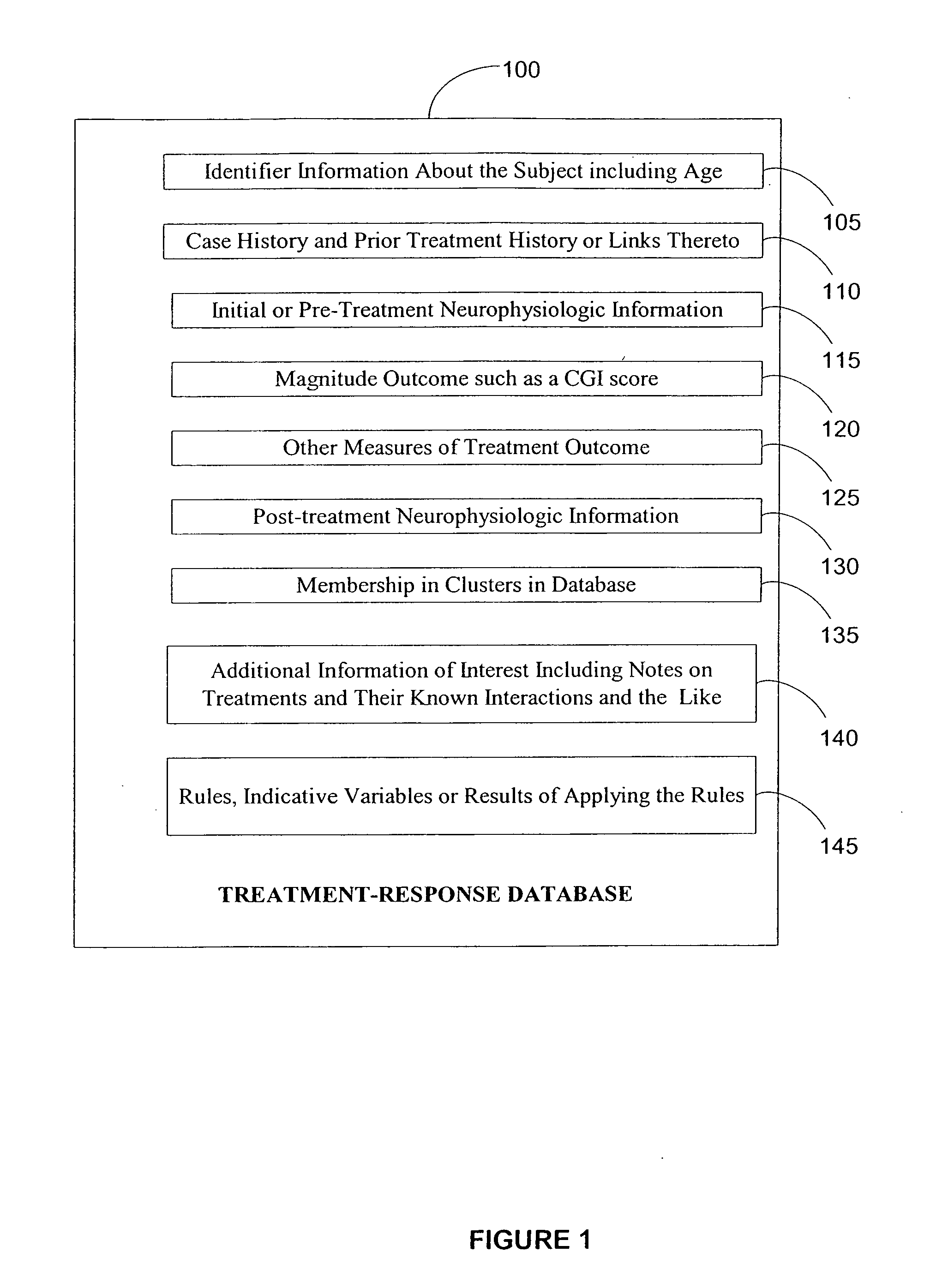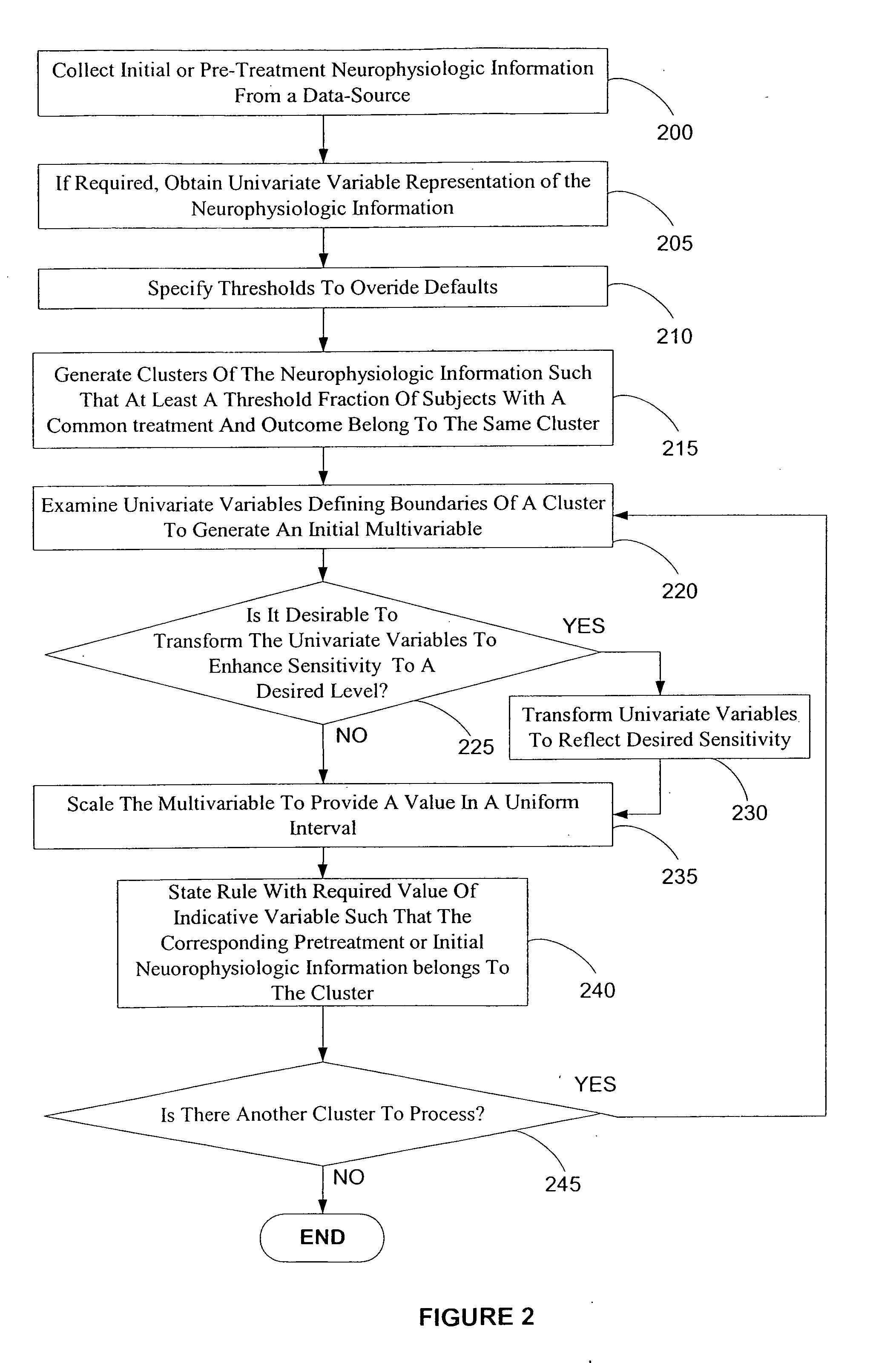Electroencephalography based systems and methods for selecting therapies and predicting outcomes
a technology of electroencephalography and predicting outcomes, applied in the field of electroencephalography, can solve the problems of aggravated mental illness, little else at hand to help the physician avoid prescribing a treatment to which the patient is non-responsive or worse, and have very limited use outside the context of monitoring and controlling seizures or studying sleep related disorders. , to achieve the effect of high quality
- Summary
- Abstract
- Description
- Claims
- Application Information
AI Technical Summary
Benefits of technology
Problems solved by technology
Method used
Image
Examples
Embodiment Construction
[0050]The present invention is directed to a method and system for modulating a subject's brain physiology. The invention enables integration of neurophysiologic information and behavioral data for predicting the outcome of treatment of a subject. In an important respect, the prediction is independent of the traditional diagnosis, and, thus is not limited by the accuracy of the clinical diagnosis or the behavioral data underlying the clinical diagnosis.
[0051]The present invention is based, in part, upon the inventors' discoveries that quantitative neurophysiologic information, preferably including quantitative electrophysiologic information, is a reliable indicator by which to choose therapies for individuals with behaviorally-diagnosed psychiatric conditions and to predict outcomes from selected therapies. It has been discovered that such quantitative information is more reliable and useful for guiding treatment of mental disorders than traditional diagnostic classifications arrive...
PUM
 Login to View More
Login to View More Abstract
Description
Claims
Application Information
 Login to View More
Login to View More - R&D
- Intellectual Property
- Life Sciences
- Materials
- Tech Scout
- Unparalleled Data Quality
- Higher Quality Content
- 60% Fewer Hallucinations
Browse by: Latest US Patents, China's latest patents, Technical Efficacy Thesaurus, Application Domain, Technology Topic, Popular Technical Reports.
© 2025 PatSnap. All rights reserved.Legal|Privacy policy|Modern Slavery Act Transparency Statement|Sitemap|About US| Contact US: help@patsnap.com



